32 essential tips for anyone thinking about downsizing - from practical advice to dealing with the stress and emotions
Deciding to downsize comes with many advantages, but it's not something to pursue without the right preparation


Downsizing to a smaller property might seem counterintuitive after climbing the corporate and property ladders for most of your life, but needs and wants change.
From decluttering your home to freeing up your finances for a greater quality of life, downsizing can change someone's life.
However, it's something that requires patience, planning and preparation. These tips can help you transition into a more streamlined life.
32 essentials tips for anyone thinking about downsizing
Work out your options when it comes to a new property
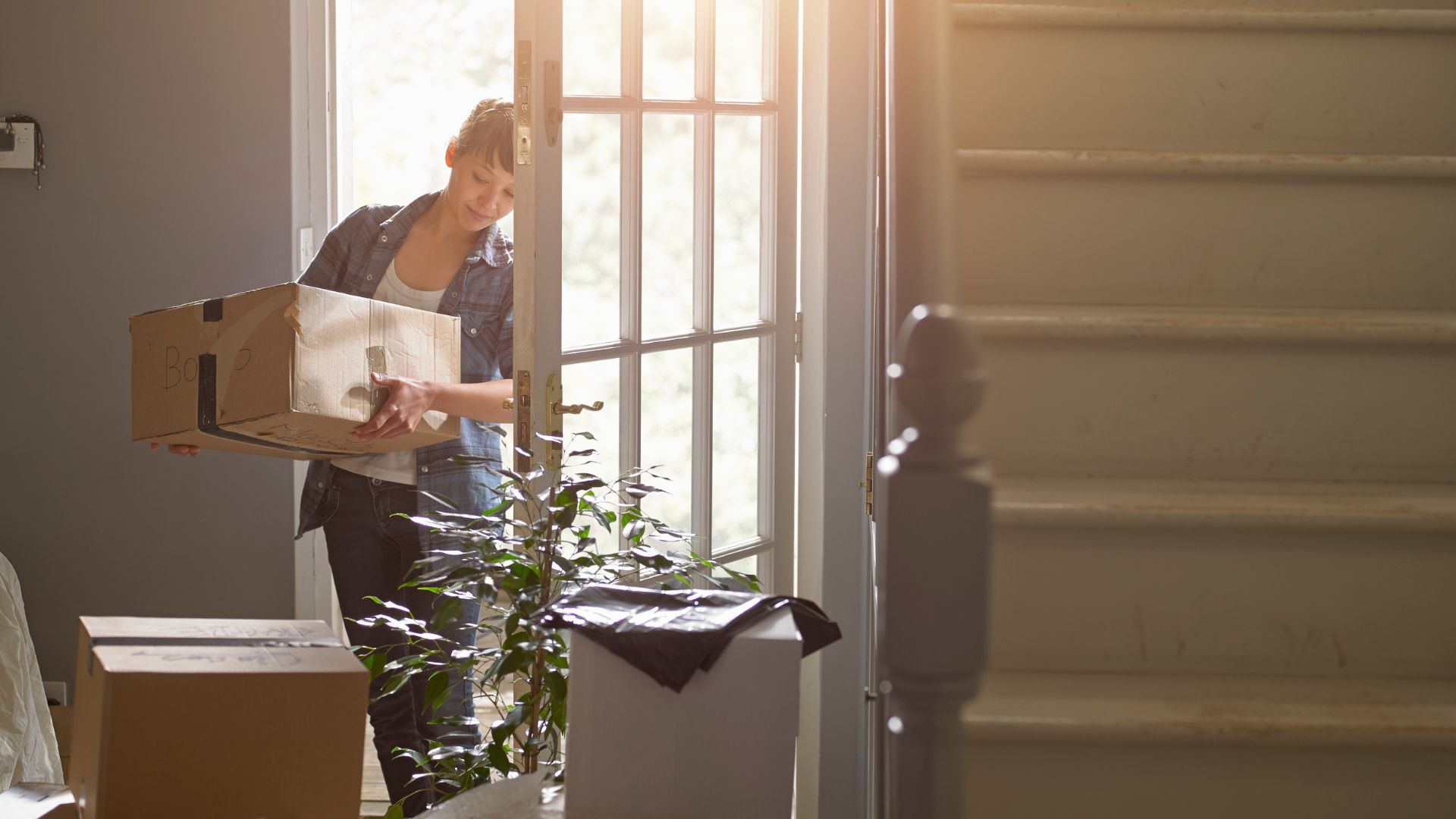
If you haven't actually settled on downsizing, one of the first steps is to sit and properly work out what it could afford you.
Even moving to a smaller property in the same area can free up equity, which can open up your finances for other things.
Downsizing from a house to a flat can save on heating bills and maintenance costs - great if you're finding it hard to keep up with a lot of space and stairs.
A bungalow can be easier to manage and get around with everything on one floor.
Sign up for the woman&home newsletter
Sign up to our free daily email for the latest royal and entertainment news, interesting opinion, expert advice on styling and beauty trends, and no-nonsense guides to the health and wellness questions you want answered.
Remind yourself why you're doing this

People decide to downsize for a myriad of reasons, and when things feel stressful, you need to remind yourself why you're doing it in the first place.
Are you moving to be closer to family? Plan nice trips out with the children or grandchildren.
Are you moving to lower maintenance costs? Plan an extra nice holiday or spa day with the money you're saving.
Tackle one room at a time

Like with any decorating or home project, you're not going to dive in and do everything at once. You are downsizing to make your life easier and fuller, so downsize your workload when it comes to getting organised, too.
You can start with the biggest or most cluttered room and work your way down. This makes the task seem less daunting and ensures nothing gets overlooked or rushed through.
Make a plan - and try to stick to it
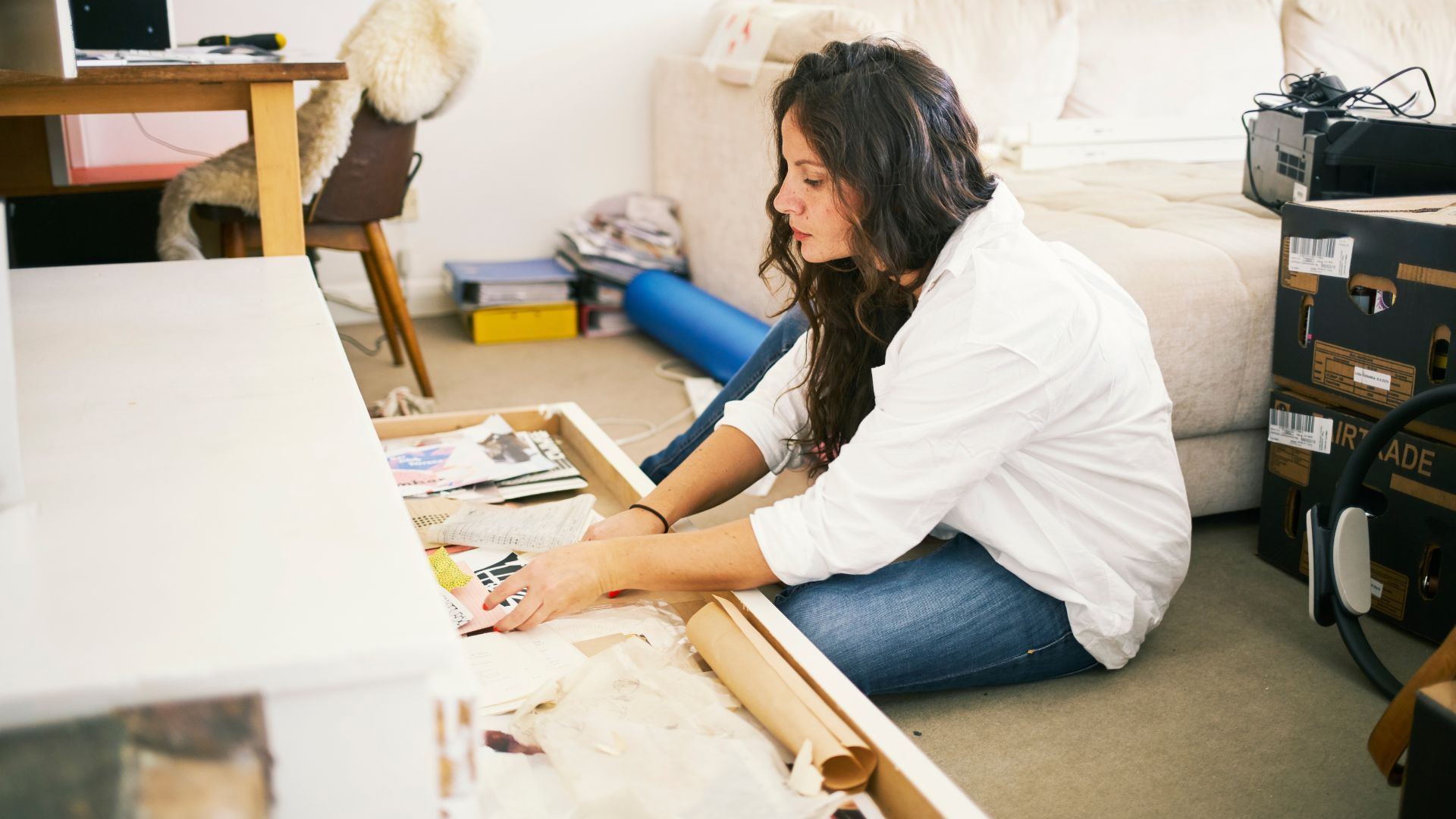
Sorting through your own belongings might sound easy, after all, it's all your stuff so it won't be too difficult, right?
Wrong (probably). Without a plan, the impact of downsizing and what it means can quickly become emotional and overwhelming - even more so if you've not got a plan for which rooms you're sorting and when.
The last thing you want to do is rush into it without structure and find yourself with piles and piles of things to work through.
Work towards a clear deadline
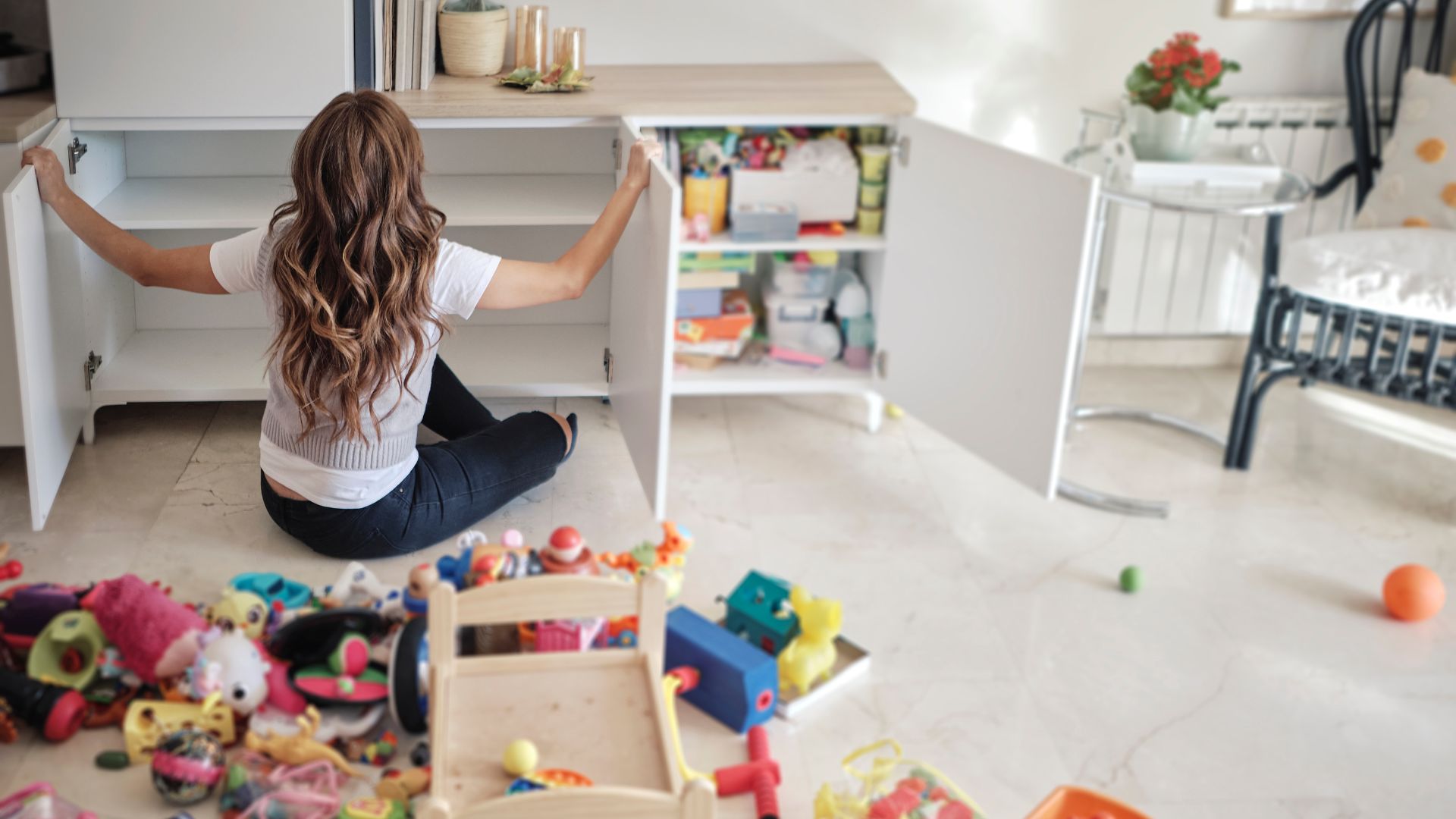
Ideally, before you even start, have a clear, defined end time in mind.
Don’t make this deadline too tight, but having a hard out for the project stops it from becoming a long, dragged-out thing.
Without a firm deadline, you could run out of time to properly downsize, meaning you throw things away in haste and come to regret it - or you take everything with you to your new space and start a new chapter with the baggage of your past.
Make an inventory
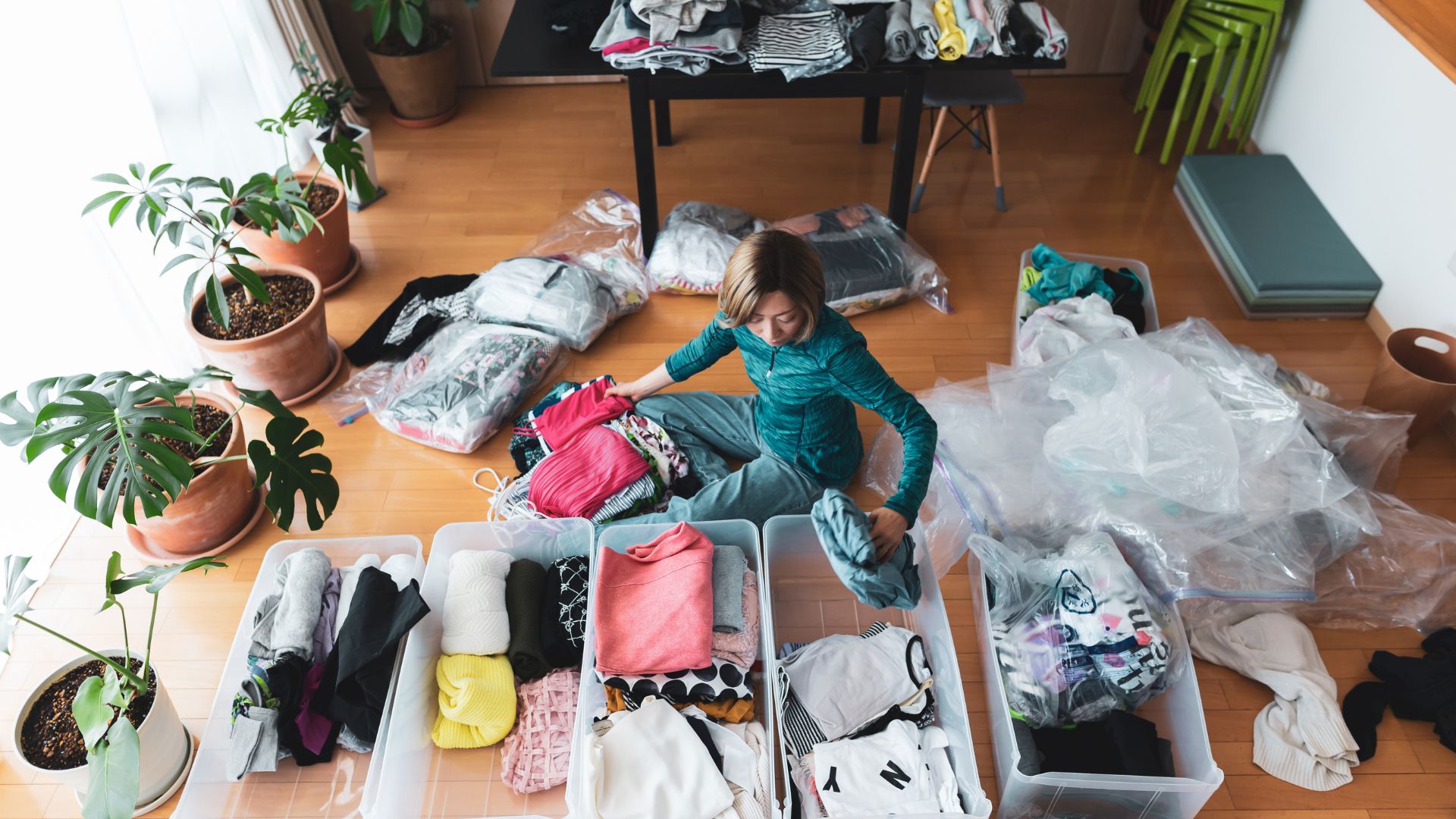
Before you actually get into the sorting and removing of items from each room, make an inventory of what you pull together. This will show if you have lots of duplicate items and gives you a clear sense of the size of the task at hand.
You might need to rethink your strategy after pulling together inventories for each room and this is better to do at the start than when you're running out of time (or patience).
Make it fun!
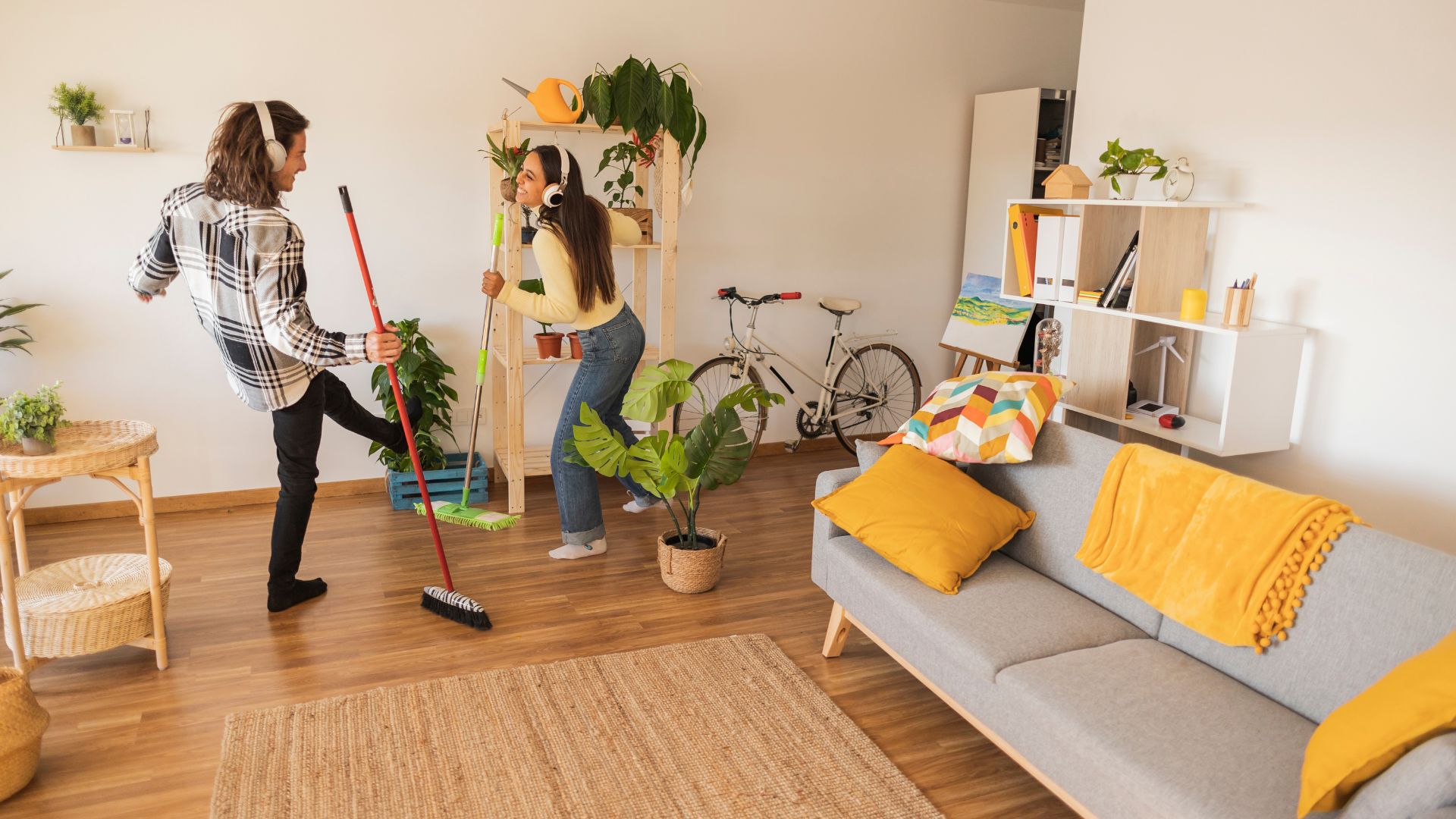
This isn't the most practical of tips, but it is an important piece of advice: have fun when it comes to downsizing and decluttering.
It's a new chapter and a new space. You shouldn't feel as if it's all a chore. Invite a friend round, put on some music with your family, and generally approach it as if it's a fun, new opportunity.
Sort your things into three piles
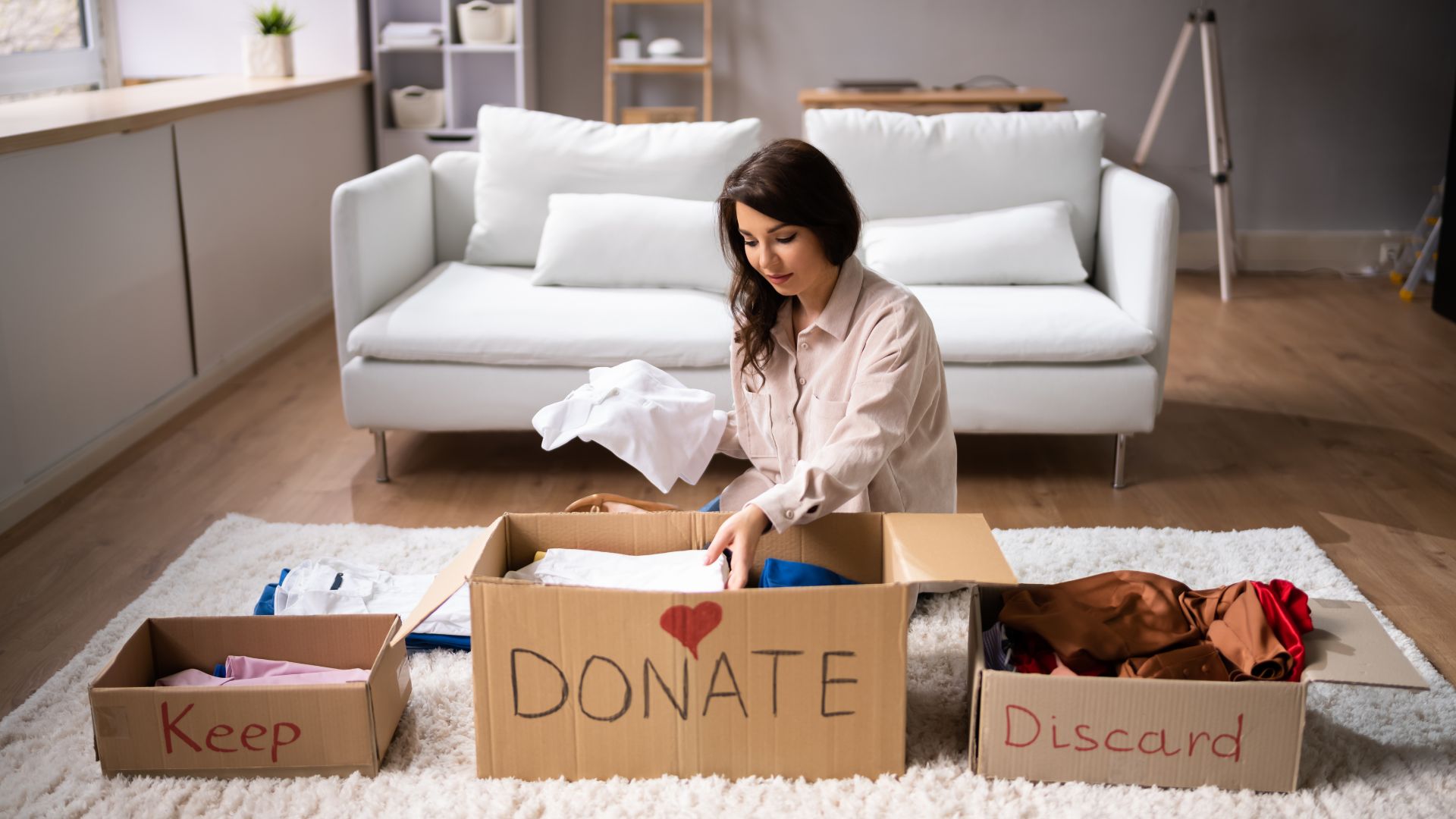
When you're starting your downsizing journey, you're going to have to make some decisions on your possessions. The easiest way to divide them is by setting up three distinct piles - a Keep pile, a Donate pile and a Throw Away pile.
When in doubt, remember Marie Kondo

The trend of KonMari really took off after Marie Kondo’s first Netflix series went viral in 2019.
The Japanese organising consultant believes in keeping tidy with a mindful approach, asking people to assess each item and determining whether it ‘sparks joy.’ If something doesn’t make you feel anything, it’s time to give it up.
Don’t miss out on making money
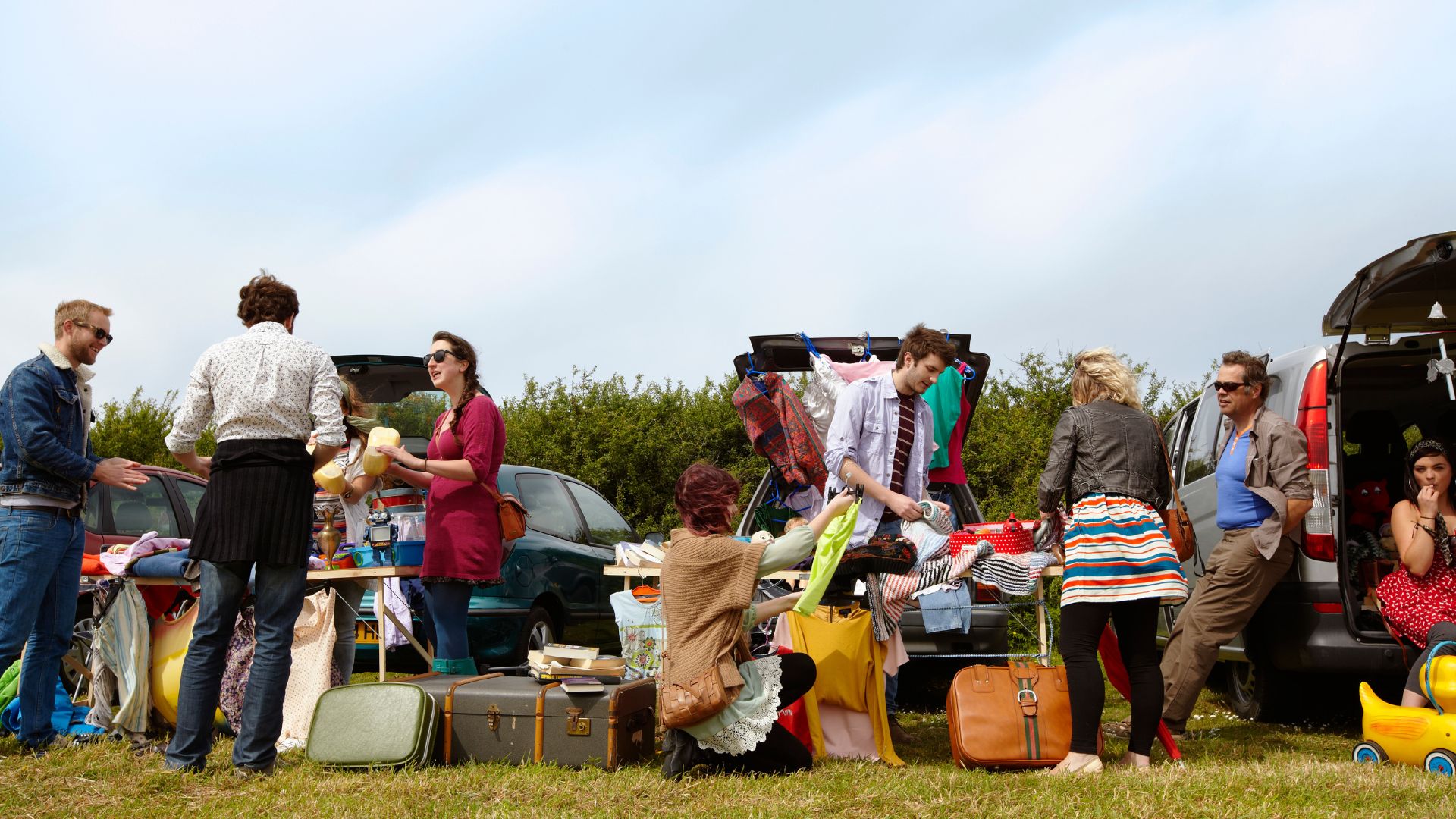
Downsizing is a great way of rethinking your finances anyway, moving on from paying for larger spaces you might not necessarily need.
But you can also make a nice profit from selling high-quality items you don't want to keep. From Facebook Marketplace to local car boot sales and apps like Vinted, you can make sure your belongings go to a good home - and you can make back some of the money.
Remember it’s a marathon, not a sprint
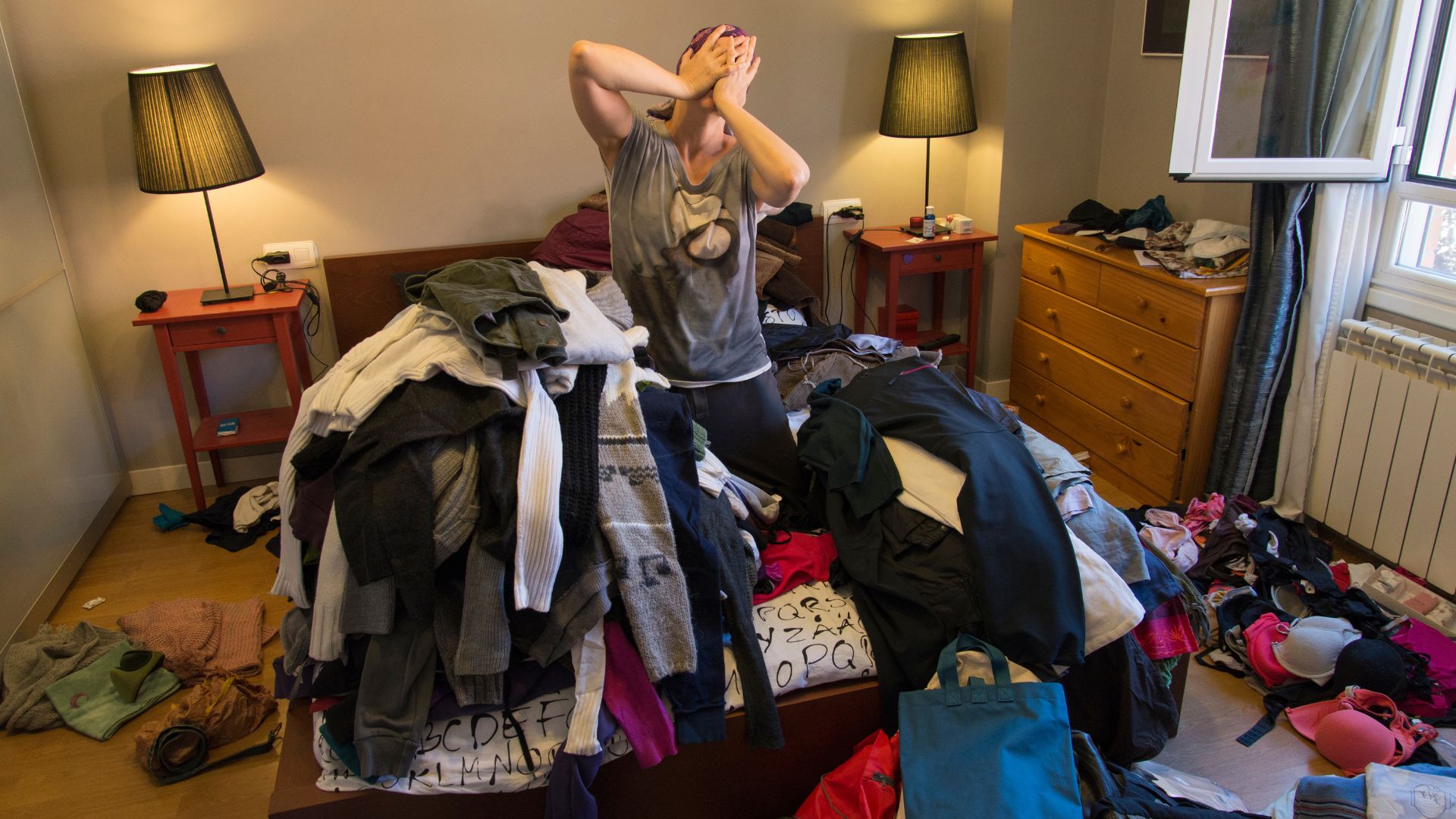
Downsizing is rarely a ‘one-and-done’ task. You might need to take a few goes at it, and this can be both during and after actually downsizing.
After you've downsized, you might discover your new space was smaller than you initially thought or things you clung to turned out to not be as necessary as you previously thought.
Measure your new space
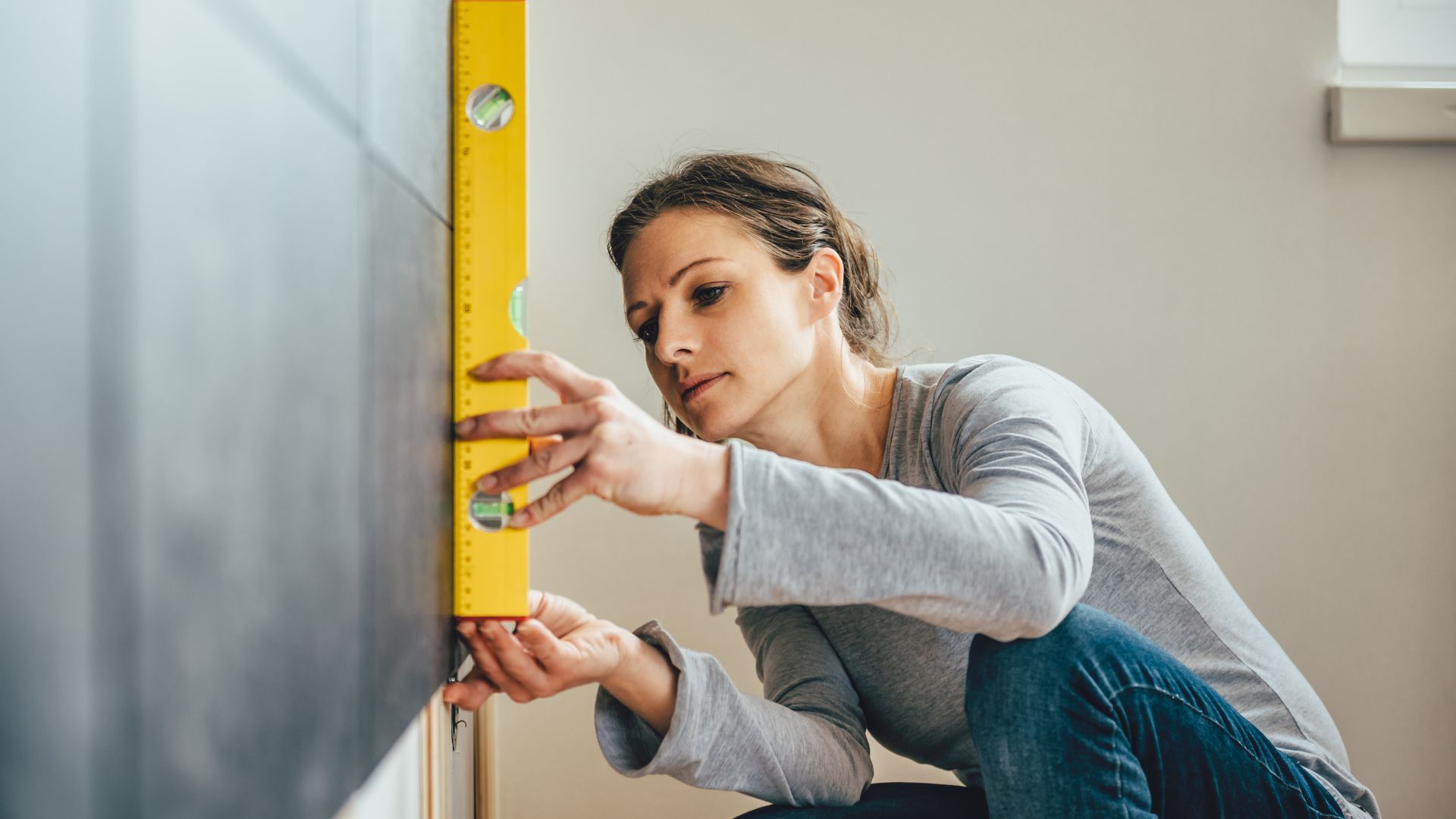
Downsizing is a chance to start afresh, and this could include new pieces of furniture. However, there might be some special pieces you're hoping to keep hold of.
Before you move, spend some time properly measuring the space. Measure everything - floor space, door frames, wall space and the distance between floor-to-ceiling. It'll help you plan how to decorate and how to keep a balance of new and old without needing to make any unexpected compromises.
Try out the 'one-year rule'

Some experts live by the 'one-year rule' which challenges people to look at each item and try to recall every time it's been used or worn in the past year.
If you're struggling to remember, or it's only a mere handful of times, you can most likely live without it.
Consider renting a storage unit
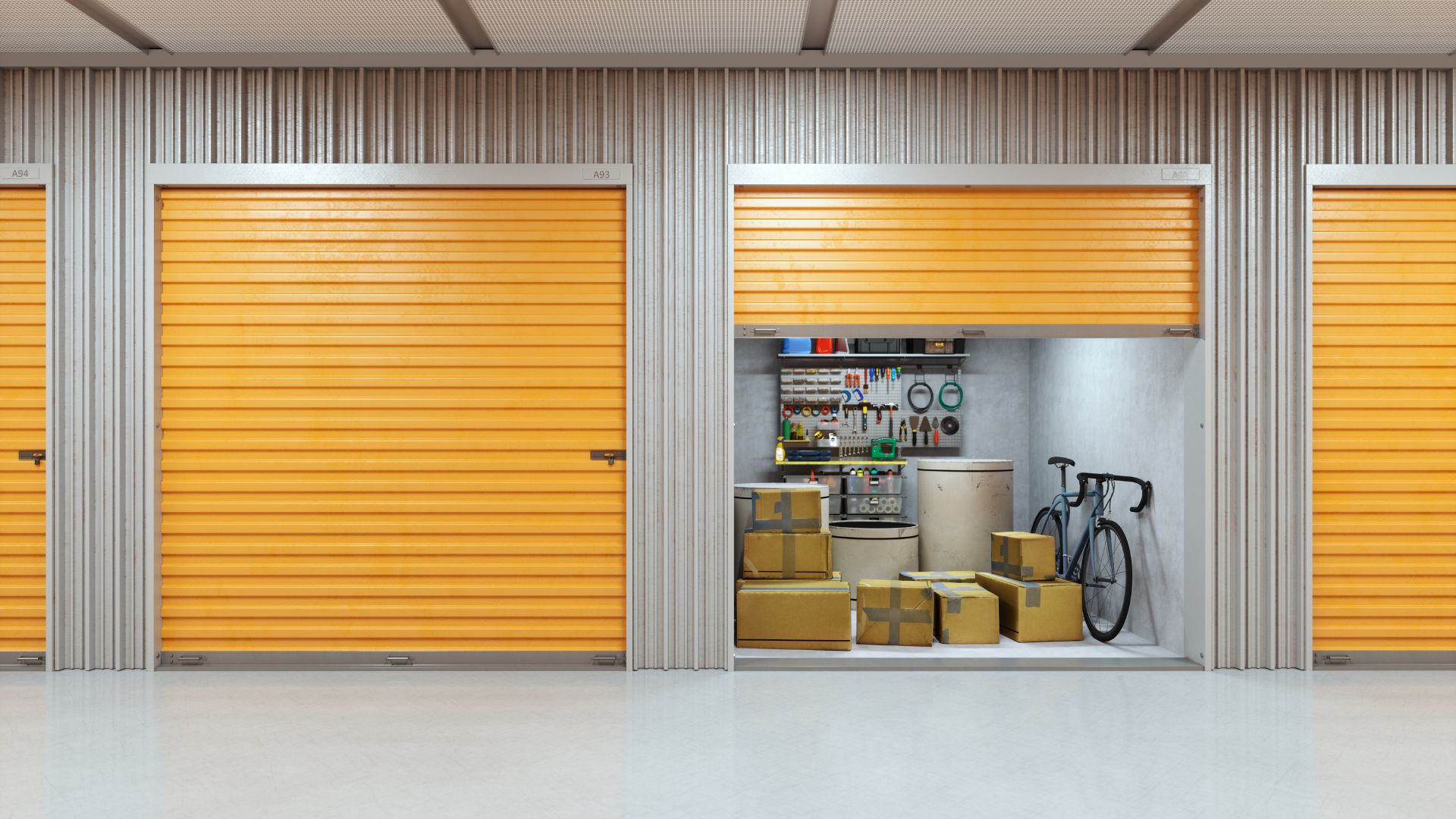
If you’re on the fence about certain belongings, it’s better to be safe than sorry. There are plenty of outsourced storage solutions that’ll allow you to keep things out of your home but not have to get rid of them completely.
If you try keeping them in storage for a month or more and you discover you forget all about them or never need them, you know you could get rid completely.
While it can be cheaper to look up local listings of people renting out their garage spaces, you should consider how safe and secure this would be compared to a company that runs insured rental spaces.
Keep your storage spaces organised
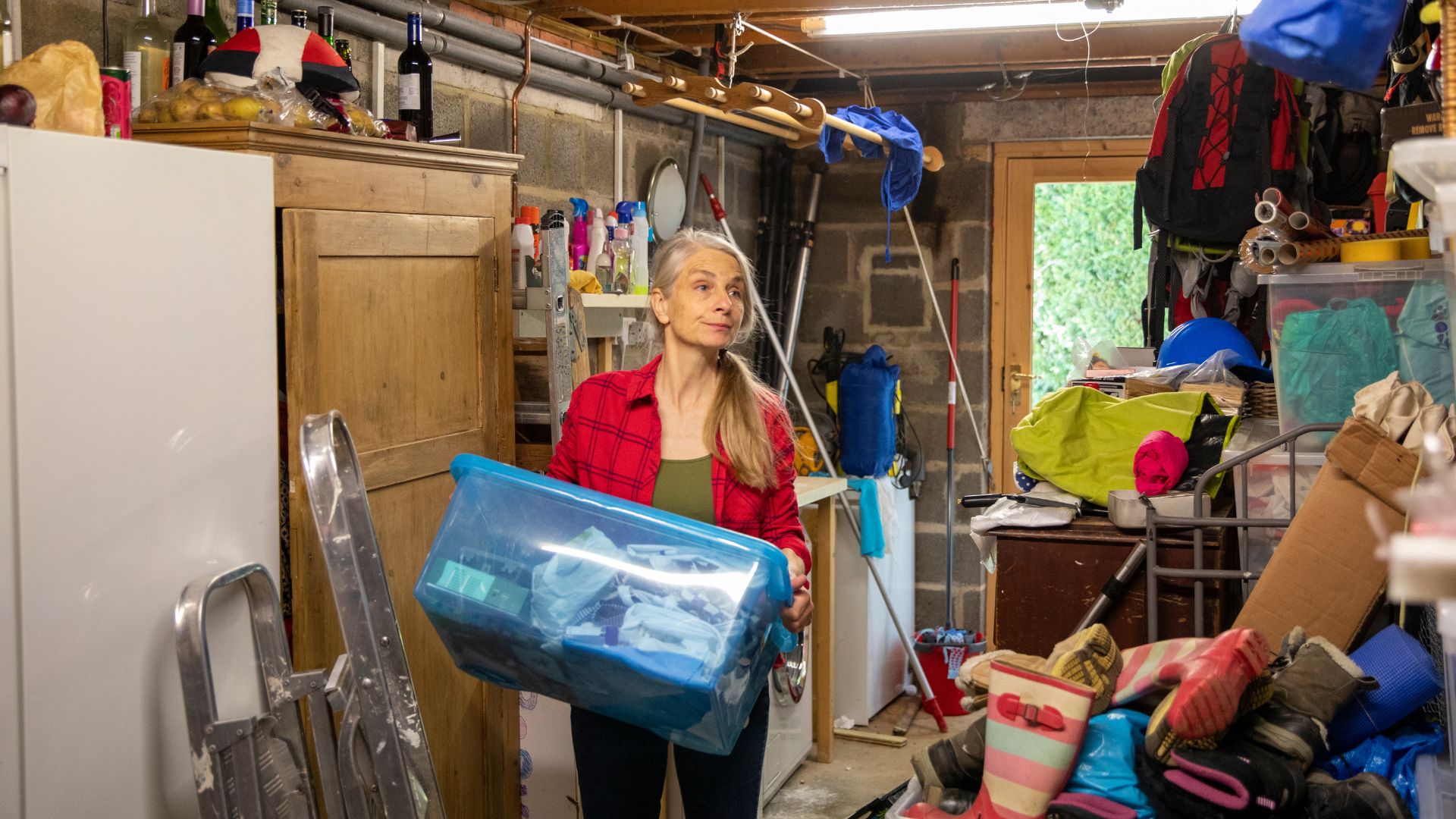
If you do have a storage unit or have tucked things away in an attic or garage, don’t just let things accumulate and get out of control. The tip to downsizing is knowing exactly what you have, and where.
Keep similar items or items from the same rooms grouped together. Keep an inventory if you can. This way, you won't buy unnecessary items and get in the same situation as before downsizing.
Be realistic

We can all be guilty of thinking 'maybe I will fit back into these clothes from 10 years ago at some point' or 'I’ll eventually get around to reading all those magazines or books.' Chances are… you won’t.
This is fine when you have ample space, but after downsizing, you'll realise just how much valuable space these unused items take up.
Follow a 'one in, one out' rule

Either before, during or after your downsizing, introducing a mindful attitude towards shopping can help you keep streamlined and stick to a less cluttered life.
Consider implementing a rule where you don’t buy something new until you get rid of something it can replace. It'll make you evaluate just how much you really want (or need) something. For example, do you have two similar pairs of shoes? When was the last time you wore the original pair?
Make sure everything has a 'home'
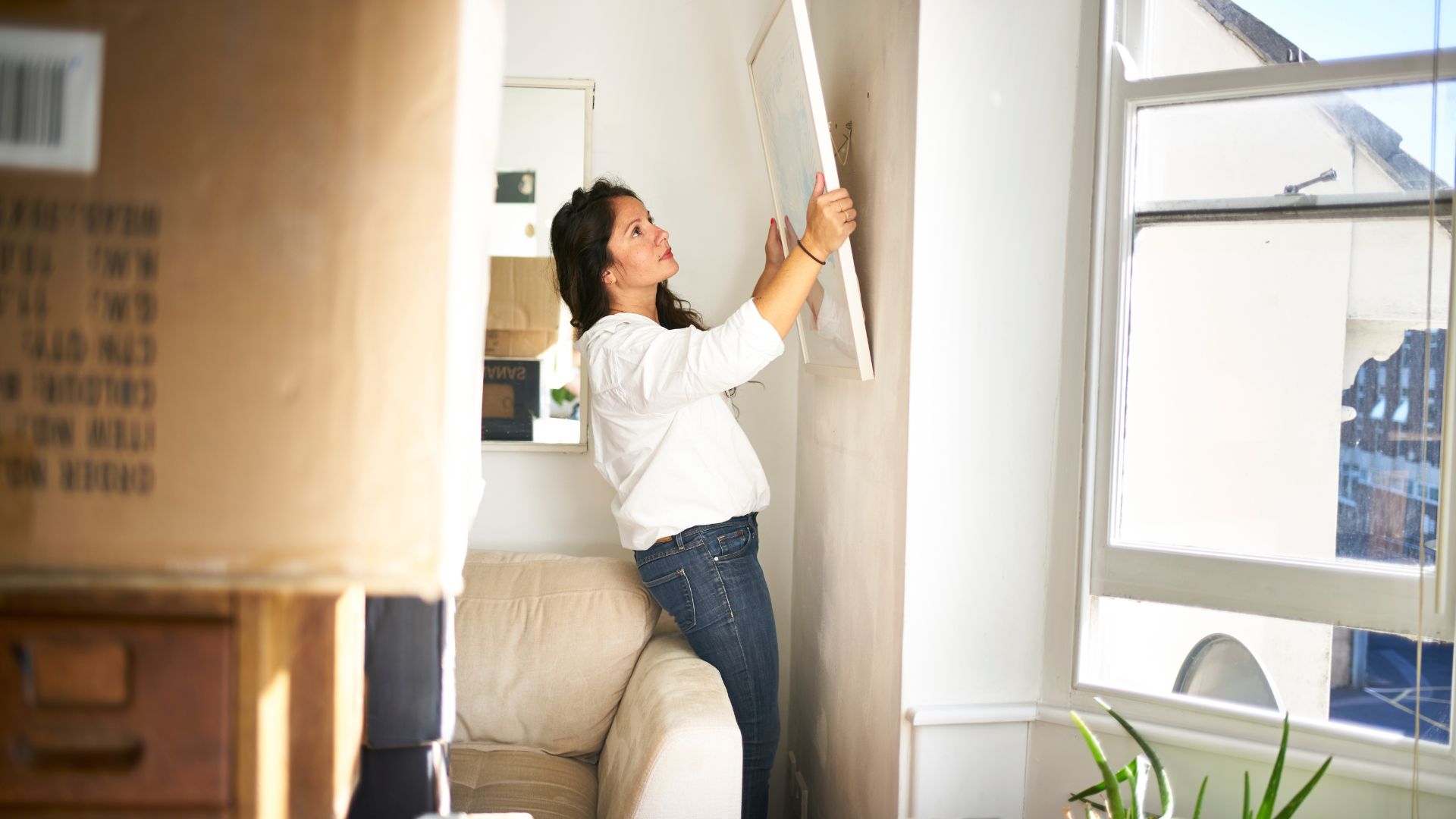
We've all done that classic thing of not placing our keys in their usual spot and then struggled to find them for ages (usually when we're already running late).
Once you start designating spots for specific items and ensuring they always go there, it will become easier to put things back where they belong.
This will also make it easier to see where things simply don’t fit in your new downsized and streamlined space.
Get a second opinion
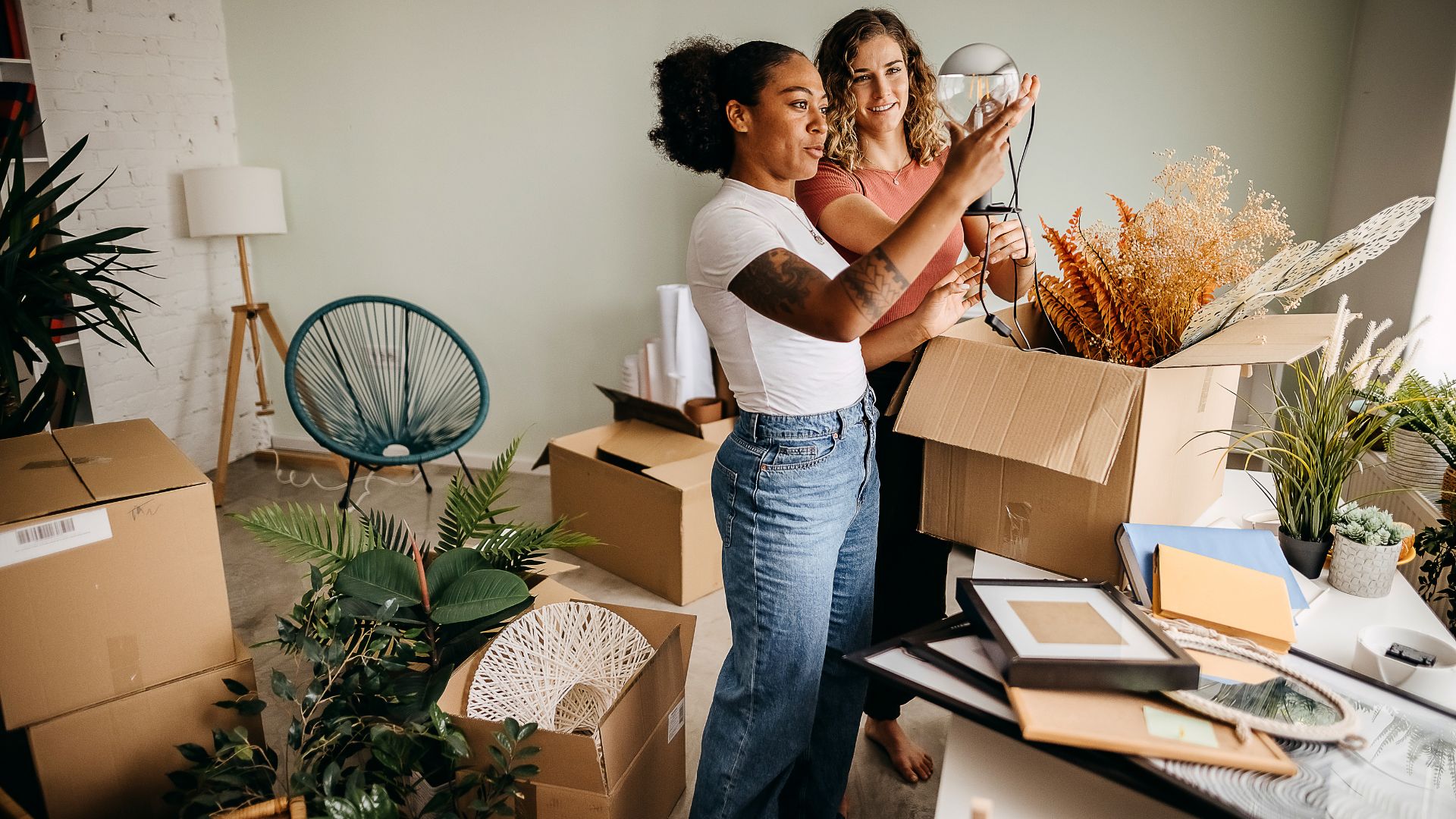
You might not be impartial enough to really know if you should keep hold of something, or if you’re making the most of your space. Ask a trusted friend to be brutally honest with you about outfits, artwork, and other things you might have even a slither of doubt about.
Also, if you're downsizing a family home, this can put the onus on your family members to take care of their own belongings and give you fewer rooms to clear out.
Try giving away one item a day

Whether you do a full year or just do it until it’s time to move into your new home, some people try donating or throwing away just one item a day.
It seems small but quickly adds up, and gives you time to really consider each item.
Take before and after photos
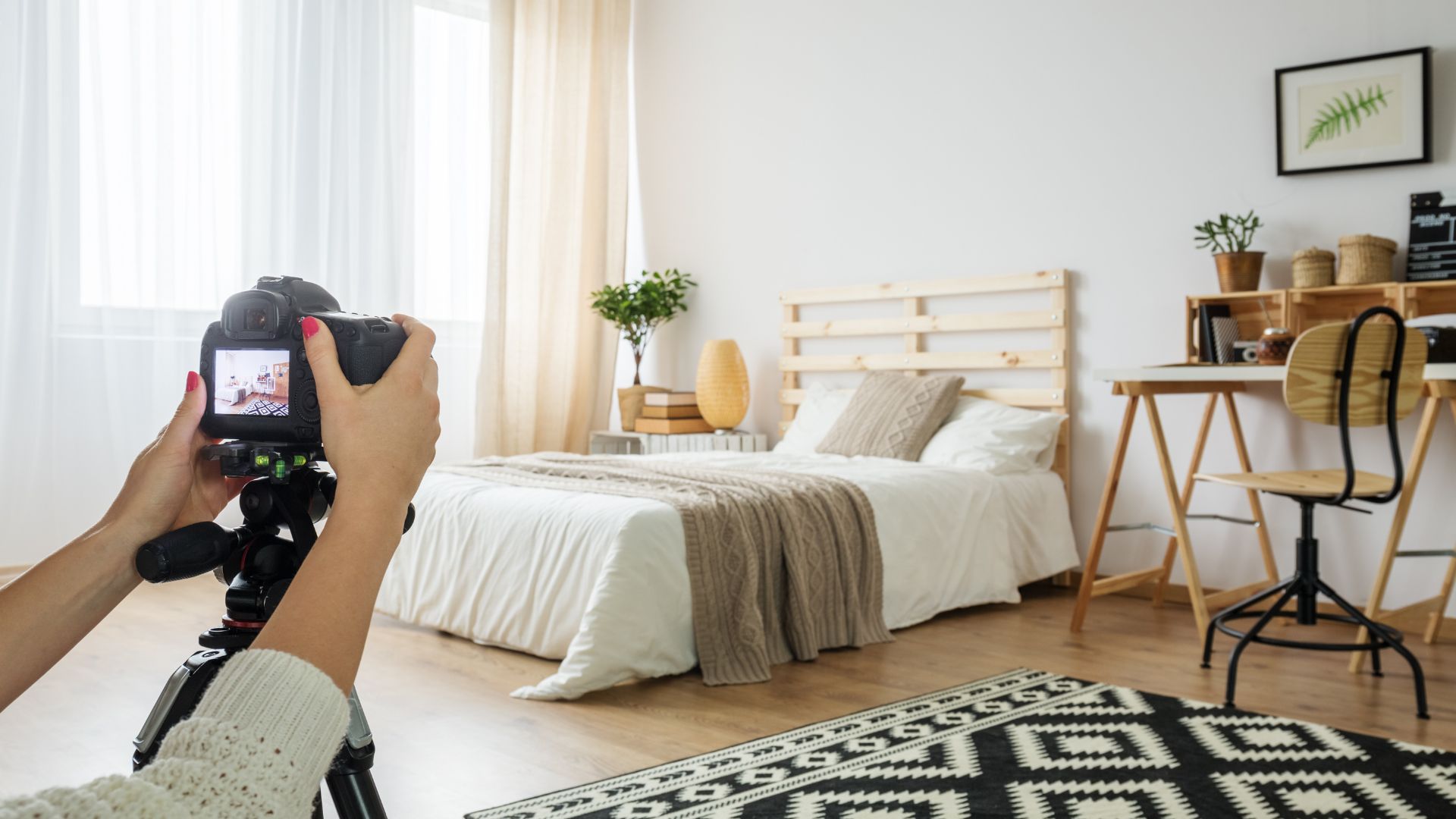
Running out of steam? Not sure you've made much headway? Consider taking a before and after photo of your spaces after you've begun the downsizing.
Just like when you're on a fitness journey, having actual evidence of just how far you've come will keep you motivated to keep going.
Bite the bullet with a speed-test

Consider this one more of an extreme tip for downsizing when you just can't quite get started.
It's a simple trick - you grab your phone or a stopwatch and set it for one minute.
In that one minute, you simply tackle a large pile of belongings and fill the bag as much as you can in the time. Once it's done, you can't think twice or change your mind. Bag it up. Drop it off. Don't look back.
Chances are you won't even remember what was in there after you've done it.
Try a clever clothes trick to work out what you really don’t wear

For many people, condensing a large wardrobe into a smaller space can be the hardest challenge. However, downsizing will change your perspective on just how much you're wearing what's in your wardrobes anyway.
One trick to use is the reverse-hanger trick.
To do this, hang all the clothes in your closet backwards, and only correct them when you wear them. Get rid of the ones that are still inside out after a month or two.
Make the use of clear containers
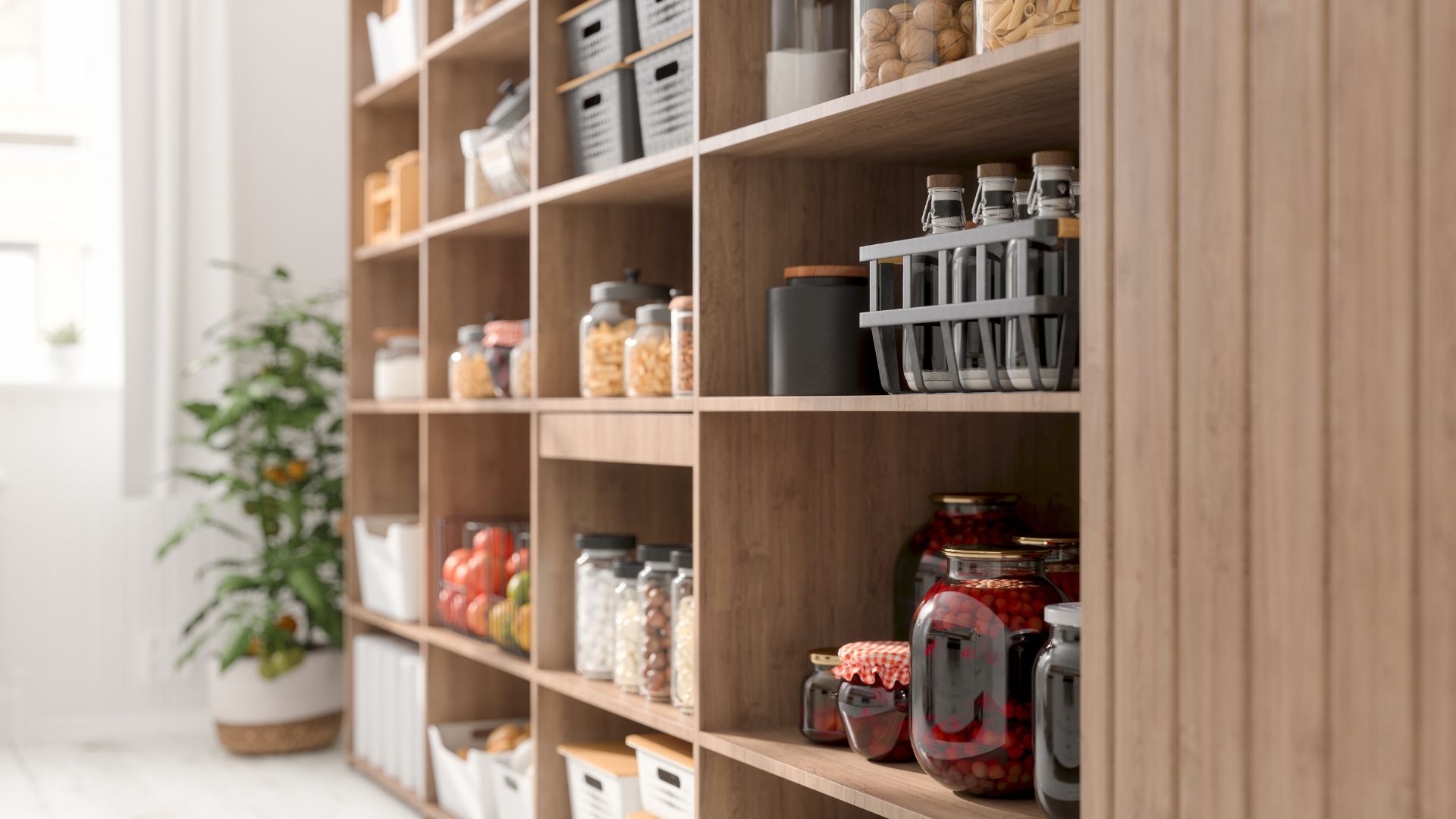
Out of sight, out of mind is great when you have the space to tuck things away in wardrobes or attics, but after downsizing, you might not necessarily have that luxury.
When it comes to condensing things or storing things away, do so in a way where you can't lose track of what you've got.
A clear box and keeping similar items grouped will help you keep some order and reduce the likelihood of duplicate purchases or keeping hold of superfluous things.
Visualise your future

Downsizing can feel like it’s all about the past and the present – clinging on to memories and rearranging things to fit your current needs. But what about the future? Where do you see yourself in the next 6 months? The next year? Even further?
If you plan to spend the next phase of your life travelling and enjoying hobbies away from home, do you really need so many material possessions? Can you further streamline your furniture? What about keeping some space free for grandchildren or guests?
You have to build these into your vision, as chances are, you won't be able to have as many spontaneous visitors staying over.
Repurpose items to keep them
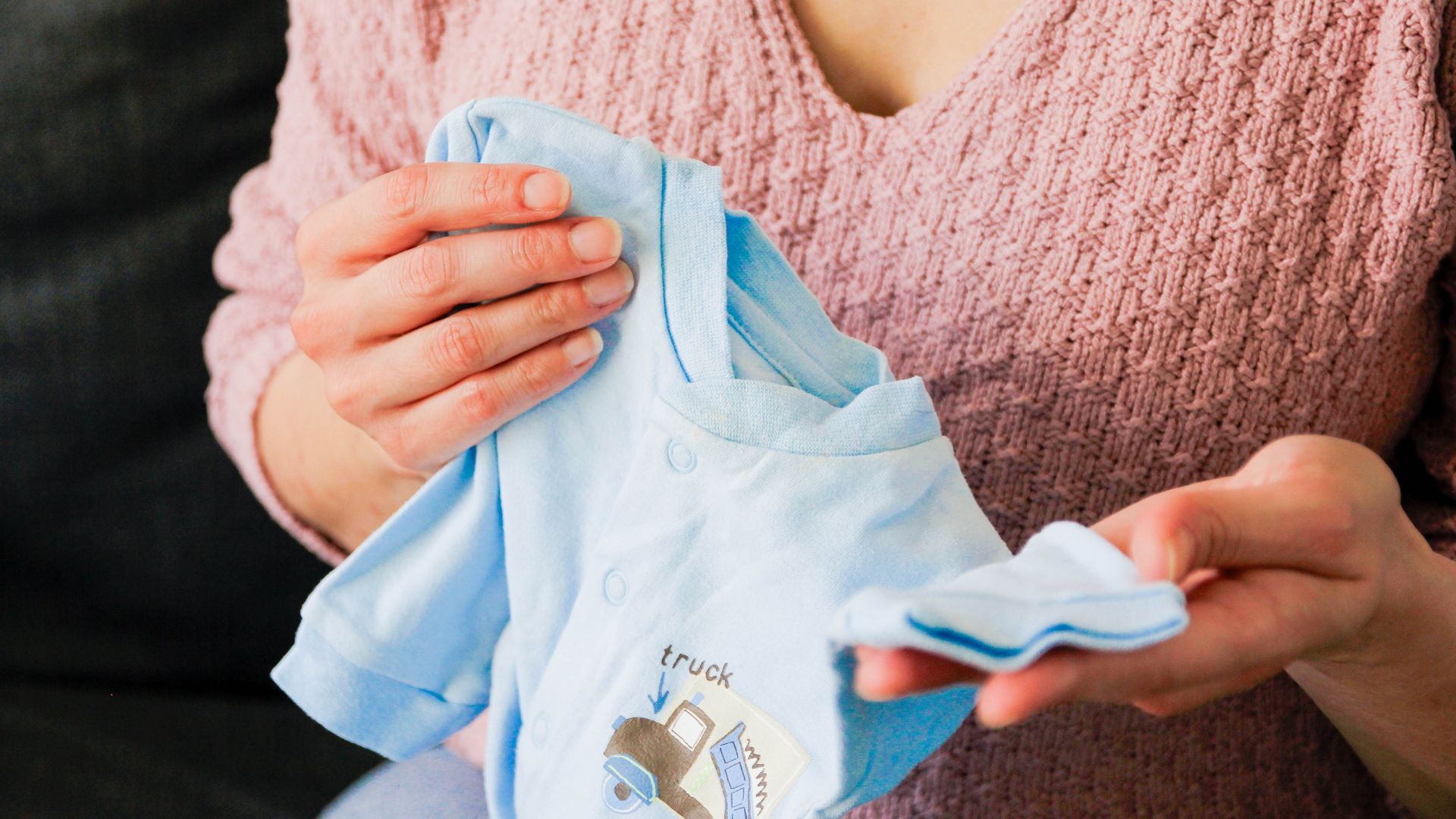
A top downsizing tip is repurposing something to give it a multi-functional purpose.
For example, are you holding on to sentimental baby clothes and can't bear to part with them? Consider making them into a blanket. That way, you've still got the treasured keepsakes but in a more space-saving manner.
Other ideas include keeping keepsake heirlooms together in secured storage boxes or using vacuum bags to condense loose clothes or other bits.
Make time to digitise

There's much to be debated about the move to everything being virtual or digital, but there's no denying it can be a real space-saver for those hoping to downsize.
Something you can do when downsizing is decide to turn some old family videos or photo albums and make them digital. There are companies who can do this for you, and you'll be able to make several copies for safety.
Not only will this free up even more space, but you can be sure that your precious memories are safer from wear and tear.
Put a label on it
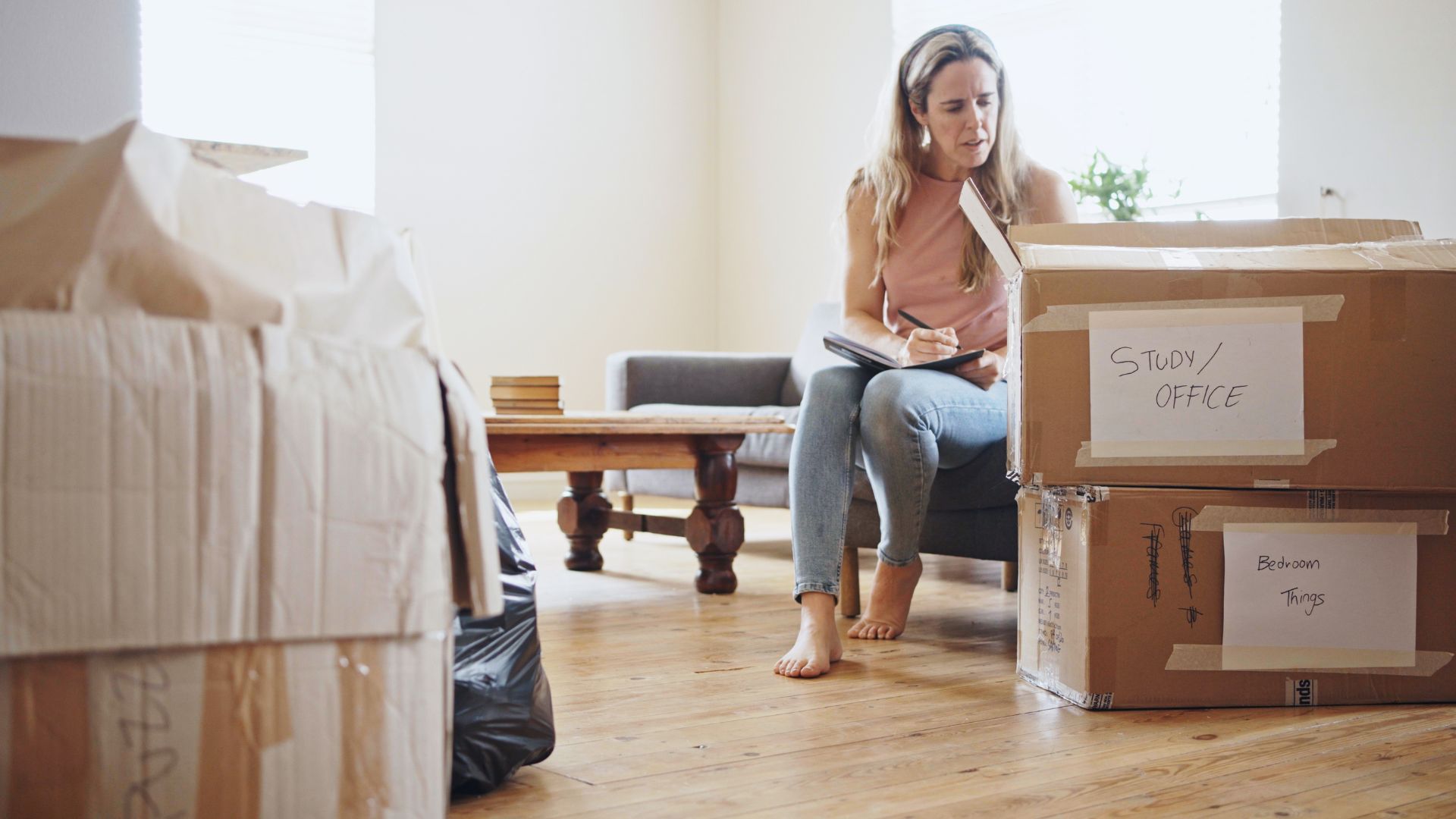
It might sound obvious and relatively old-school, but never overlook classic tips like making the most of labels.
Get a label maker and get seriously organised.
If you can’t be bothered digging through boxes of things to check what you have already packed away, label them! This will help you keep stock of exactly what you have, and where.
Hire a professional
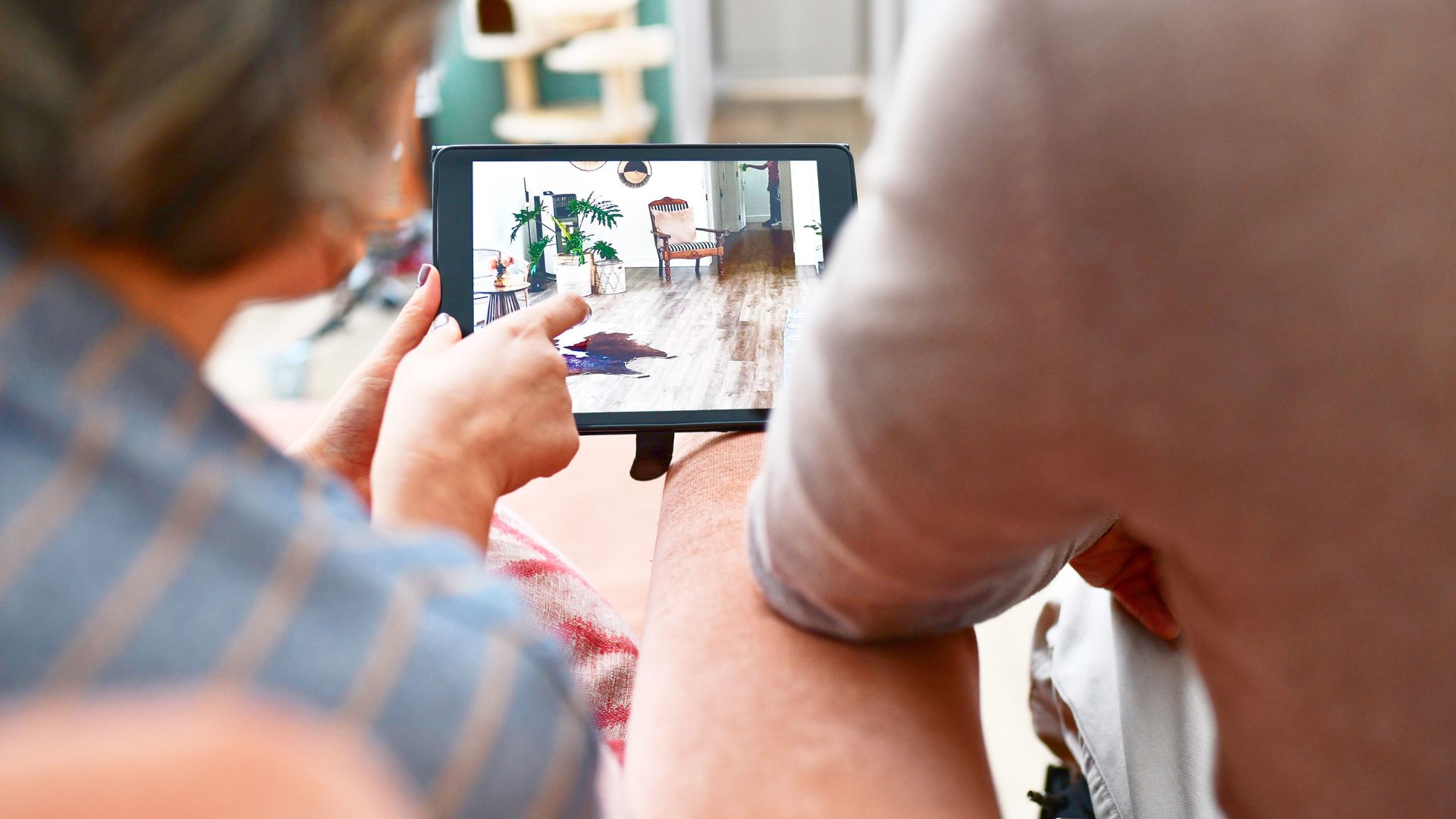
If in doubt, outsource. There are people who can come in and give you a full assessment from an impartial perspective. They can share some professional tips and tricks, plus help you get organised in a way that’s efficient and effective.
Regularly re-evaluate
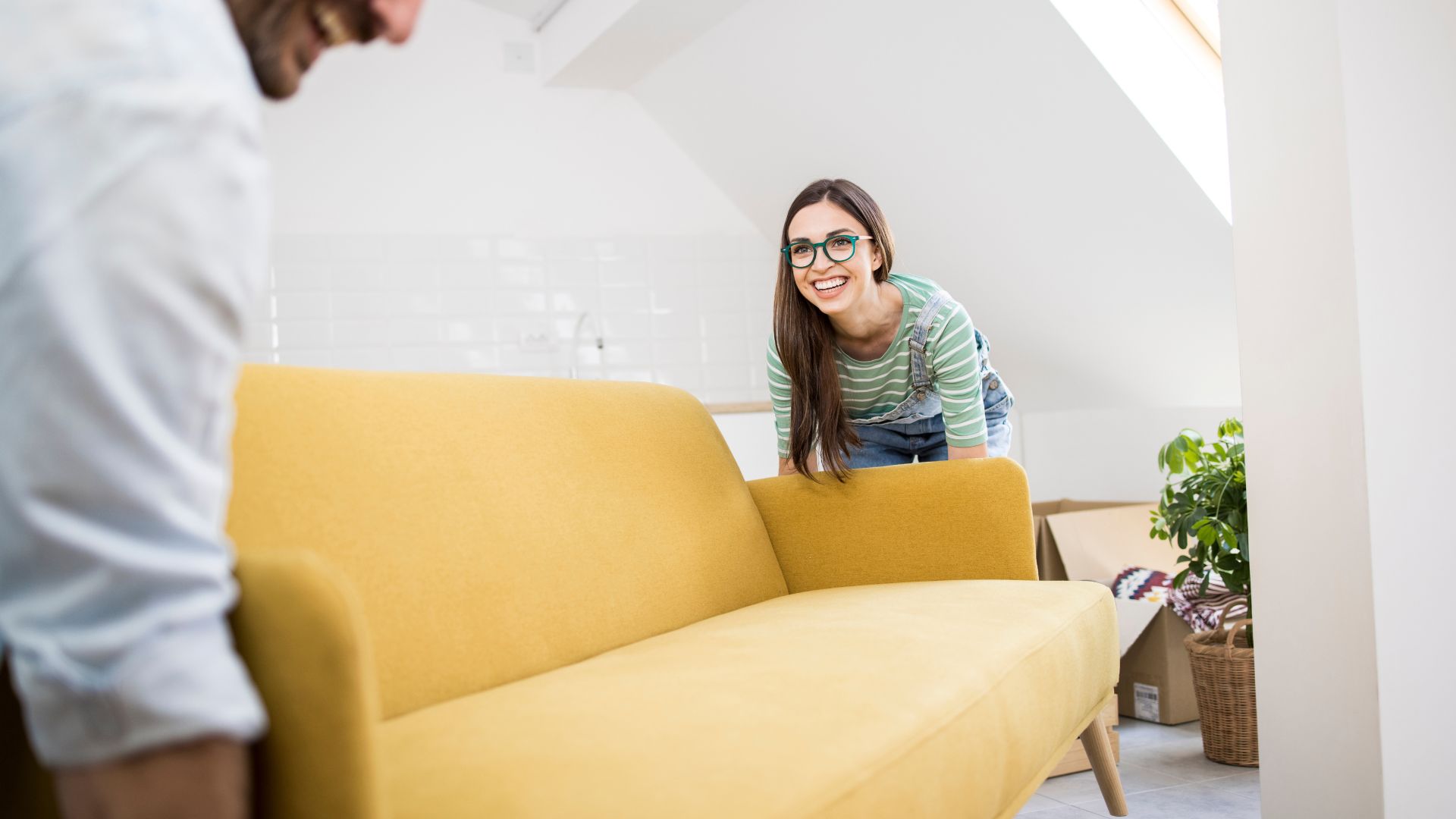
As time goes on, your storage needs or interior design vision may change.
Be sure to regularly re-evaluate your downsized space and determine if you still want to keep it that way.
If you find that you no longer need something, consider selling, donating, recycling, or throwing it away. If you realise you're not really using all your furniture, consider if you want more floor space opened up.
Don’t be afraid of change
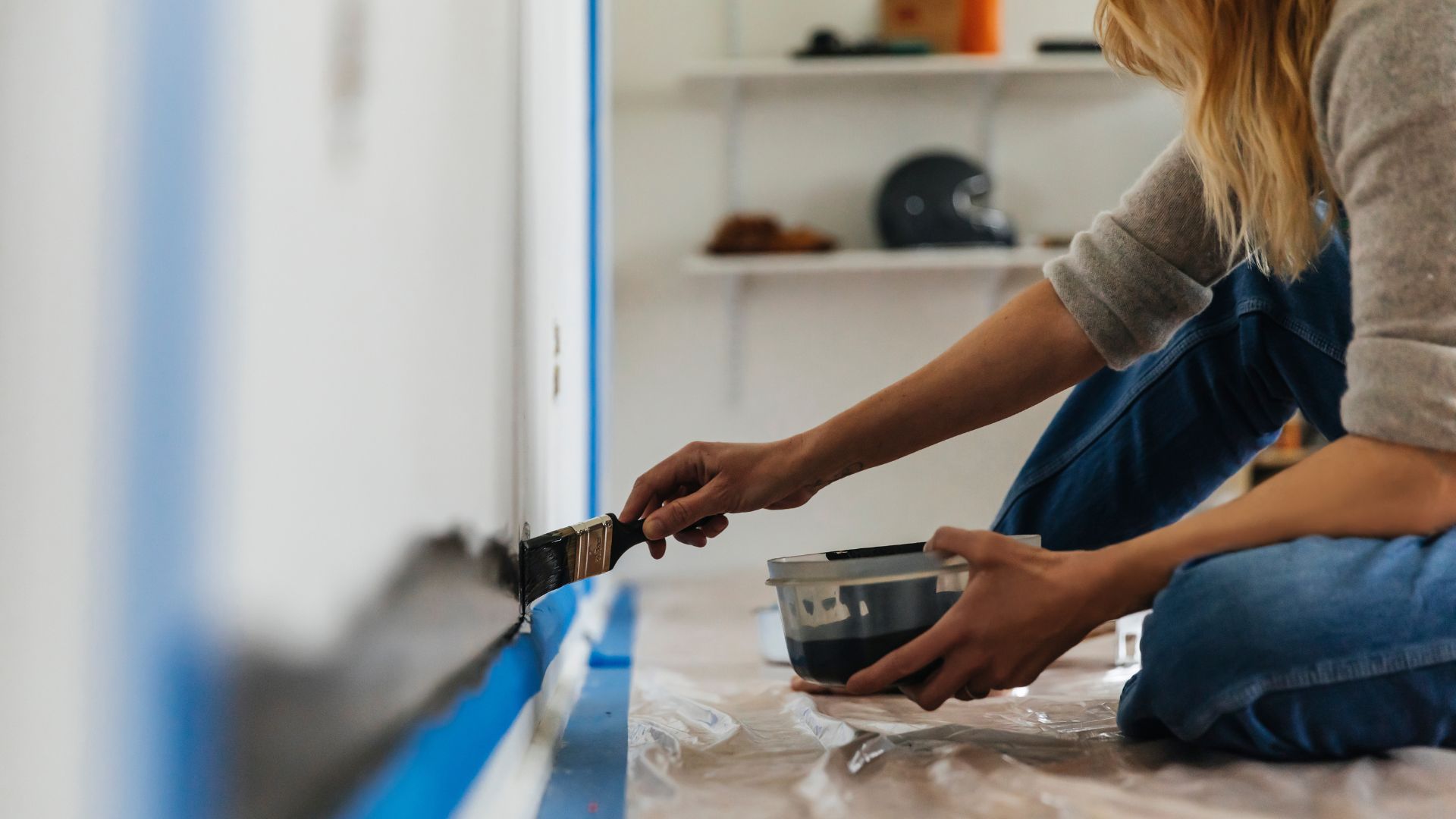
What’s the point of downsizing if you just end up trying to recreate your old home in a new, smaller space?
From keeping every piece of artwork and furniture to sticking to an aesthetic you've become familiar with, a new space can quickly feel cluttered if every inch of the wall’s real estate is claimed, or there's little room to move about.
Give yourself adjustment time

Adjusting to a smaller space can take time. You might feel like downsizing was a mistake to begin with or feel constrained by the lack of extra room.
However, like most things, change can take time.
Eventually, many find that the benefits, such as reduced maintenance and lower living costs, outweigh these initial bumps.

Jack Slater is not the Last Action Hero, but that's what comes up first when you Google him. Preferring a much more sedentary life, Jack gets his thrills by covering news, entertainment, celebrity, film and culture for woman&home, and other digital publications.
Having written for various print and online publications—ranging from national syndicates to niche magazines—Jack has written about nearly everything there is to write about, covering LGBTQ+ news, celebrity features, TV and film scoops, reviewing the latest theatre shows lighting up London’s West End and the most pressing of SEO based stories.
-
 The Handmaid's Tale: Does June get Hannah back at the end of season 6?
The Handmaid's Tale: Does June get Hannah back at the end of season 6?It's been June's endgame from the very first moments of The Handmaid's Tale, but will she be reunited with her daughter Hannah at the end of season 6?
By Lucy Wigley
-
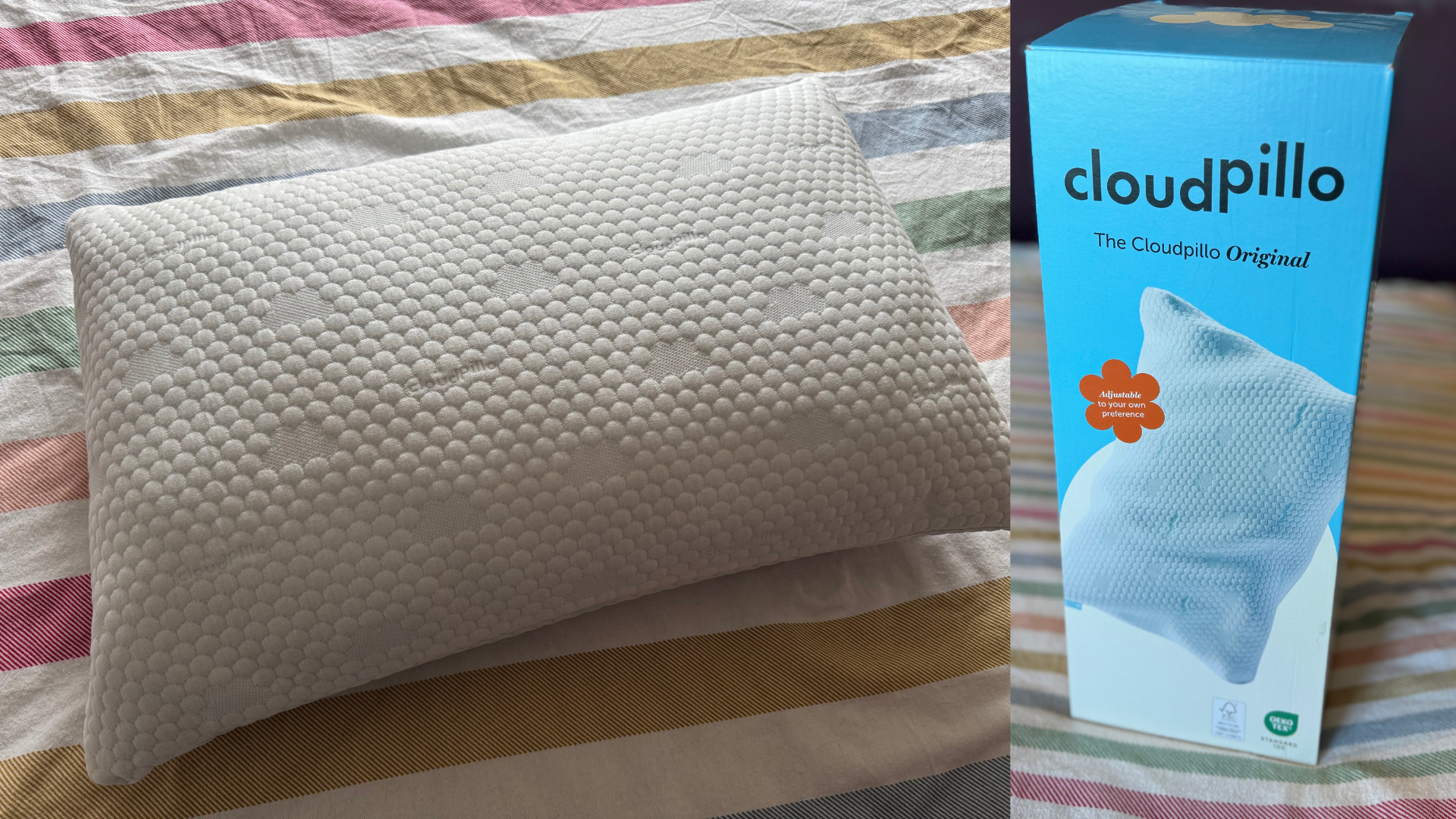 My decades-long quest for the perfect pillow ends here, but forget what you think you know about memory foam
My decades-long quest for the perfect pillow ends here, but forget what you think you know about memory foamPacked full of tiny pieces of shredded memory foam with a dual-sided cover to keep you cool, this is the next best thing to sleeping on a cloud
By Heidi Scrimgeour